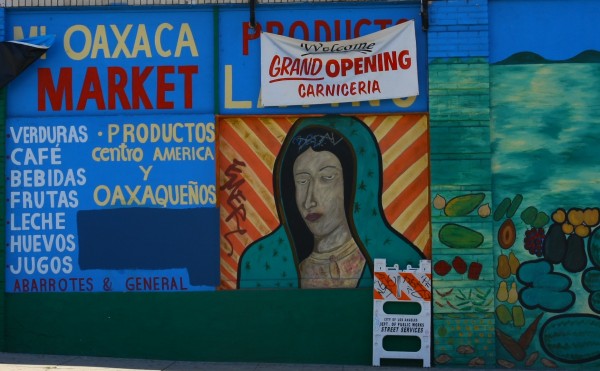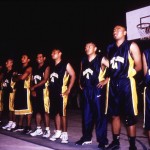I’ve been reading The Radicalism of the American Revolution by historian Gordon Wood lately. The book talks about the ways in which colonists were breaking from dependence on each other and from Britain, from traditions of England, from old religions to a new, individualistic Great Awakening and new ways of thinking, making a living and doing business.
This break from the Old World and creation of the New has always intrigued me.
Thus I was fascinated to listen to the story of Juan Gutierrez, a Zapotec Indian from a village in Oaxaca, and the owner of Panaderia Antequera in Santa Monica, which was the first Oaxacan-owned business in the LA area when it opened in 1985 or so.
We spoke in his bakery (17th and Ocean Park) the other day.
He and his wife began baking in their house, then found the small shop that was barely surviving and took it over. With the huge population of Oaxacan Indians on LA’s west side (the reasons for which are themselves fascinating, but which I’ll go into later), business has been great almost from the start, and this has encouraged other Oaxacan Indians to start their own.
Living and doing business here, far from the traditions and customs of his village, Gutierrez has had his own awakening, new ways of viewing what’s possible.
Running a business in Santa Monica, he was at the same time dealing with the 17th Century, in the form of demands by villagers back home that he return to do what’s known as his tequio or servicio. Indian villages in Mexico require members in good standing to perform a servicio, unpaid for three years.
This communal custom goes back hundreds of years and has been essential to the functioning of Indian villages. Those who don’t perform it can have their land, houses and property confiscated.
Now, though, many villagers live in the US, with responsibilities up here. Even if they have legal residency, it’s still expensive to go home; if they do not have papers, it’s even more so to return. Plus, they no longer are thinking like the young migrants they were when they arrived from the village as teenagers.
Mr. Gutierrez noted that the village depended on remittances from paisanos in the US, who had also donated money to the annual fiesta each year and funded improvements to city hall and the local school.
He offered to pay someone to do his servicio, saying he had a family and business up here and both needed his attention.
But the village authorities, in his view motivated by envy and believing him rich because he owned a business, insisted he come personally, to be a city councilman for three years.
So for three years he lived in the Old World and the New.
More later on what happened.









